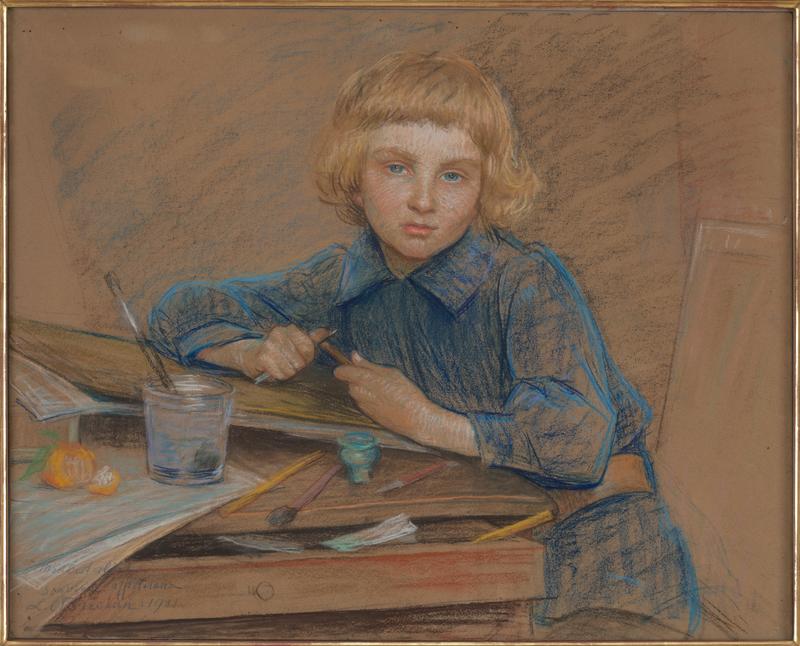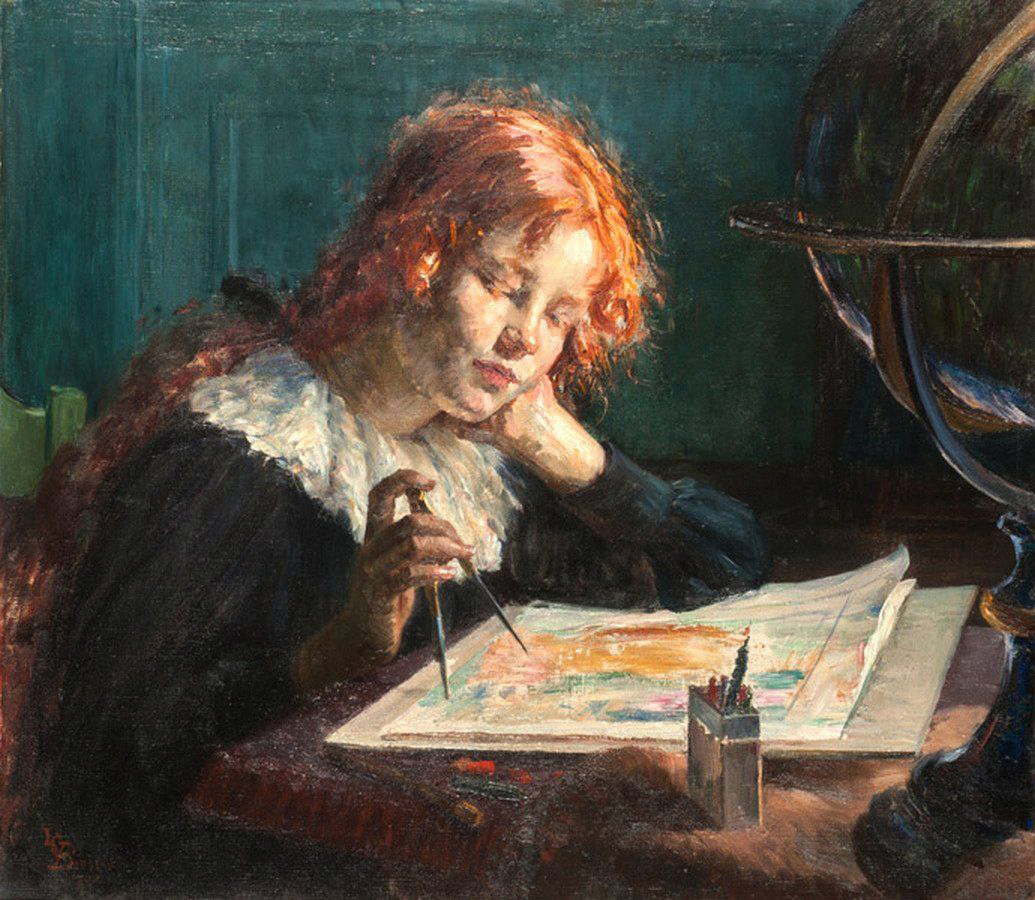
39. Louise Catherine Breslau, The Study of Drawing: Portrait of Yves Österlind, Age Nine
| Artist | Louise Catherine Breslau, Swiss (born Germany), Munich 1856–Neuilly-sur-Seine, France 1927 |
| Title, Date | The Study of Drawing: Portrait of Yves Österlind, Age Nine, 1901 |
| Medium | Pastel on brown cardboard |
| Dimensions | 25 5/8 × 31 13/16 in. (65.1 × 80.8 cm) |
| Inscriptions + Marks | Lower left: à Mad Öesterlind / Souvenir affectueux / L. C Breslau. 1901. |
| Provenance | Eugénie Carré Österlind [d. 1936]; by descent to her son, Anders Österlind [d. 1960]; estate of Anders Österlind, Ornano-Österlind Collection, Gargilesse, Creuse, France, until 2007/8; sale, Montluçon, France, 2007/8, to Pelazzo. [Pelazzo–Lexcellent Antiquités, Marché Serpette, Saint Ouen, until July 2008; to Weisberg]; Yvonne and Gabriel Weisberg, Minneapolis (2008–19; given to Mia) |
| Exhibition History | "Reflections on Reality: Drawings and Paintings from the Weisberg Collection," Mia, 2022–23 |
| Credit Line | Gift of Dr. Gabriel P. and Yvonne M.L. Weisberg in loving memory of Michael D. Michaux 2019.115.1 |
The impressionist artist Louise Catherine Breslau led a successful, prolific career in Paris as a portraitist and still-life painter. She was born in Munich to a prominent family—her mother was a baroness and her father an obstetrician. When she was two, the family moved to Zurich, Switzerland, where her father had been appointed to a professorship. She spent much of her childhood in convents, convalescing from chronic asthma. After some artistic training, the nineteen-year-old Breslau moved to Paris in 1876 to study at the Académie Julian. Unlike the École des Beaux-Arts (School of Fine Arts), the atelier admitted women and moreover was the only art school in Paris that permitted women to draw nude models. Also unlike the École des Beaux-Arts, the Académie Julian did not require a rigorous language exam, which made it more popular with foreign artists. Breslau flourished in this environment and quickly developed into one of the school’s most accomplished female artists. She debuted at the 1879 Salon, exhibiting a painted portrait of a friend (now lost). Another portrait received honorable mention at the 1881 Salon. Following this critical success, Breslau’s portrait career took off, with commissions from friends and well-to-do Parisians.
Yves Österlind (1892–1937), the sitter in the present pastel, was the child of Breslau’s friends, the Swedish painter Allan Österlind and French watercolorist Eugénie Carré Österlind. Breslau executed pastels of each of the three Österlind children between 1900 and 1904. The portrait of nine-year-old Yves, the youngest, shows the fair-haired boy at his desk, sharpening chalk. The table is in charming, youthful disarray, with papers and drawing utensils sharing space with a half-eaten orange. This and Yves’s distracted glance conform to his father’s descriptions of the boy in letters to his wife, where he worries that Yves does not draw or study enough and that his lazy habits will keep him out of the École des Beaux-Arts. All three of the Österlind children went on to become artists; Yves was a printmaker.


There is a related oil portrait of Yves Österlind, also dated 1901, that Breslau exhibited under the title The Study of Drawing (fig. 1).1 It was exhibited at the Salon as a pendant to Breslau’s The Study of Geography, 1900, which depicts a girl working at her desk with a compass, a map, and a globe (fig. 2).2 As we can see, Breslau had the rare ability, whether in paint or pastel, to capture her subjects in quiet, natural moments characterized by intimacy and psychological presence. In addition to portraits of children, she was distinguished for her conversation pieces, portraying small groups of women, or women and children, in well-appointed interiors or sunny landscapes.
Breslau exhibited across Europe. She was the first non-French woman awarded a gold medal at the Paris Exposition Universelle in 1889, and she won it again in 1900. In 1893 she became the first woman to serve as a Salon juror. Edgar Degas was a close friend, although the Dreyfus affair cooled their relationship briefly in 1894 when Degas showed himself to be antisemitic and an outspoken anti-Dreyfusard; Breslau, while baptized as an infant, was of Jewish descent and pro-Dreyfus. In 1901 she was awarded the French Legion of Honor, the first non-French woman artist so recognized.
In 1928, a year after Breslau’s death, the École des Beaux-Arts in Paris mounted an exhibition showcasing 195 of her works. Madeleine Zillhardt, her muse, model, and partner for more than forty years, inherited most of her estate. Interest in her life and career (more than 800 of her works survive) has risen sharply in the past three decades, particularly with the increased attention to women’s studies, feminist art history, and lesbian/queer studies. Breslau never publicly identified as homosexual, but her relationship with Zillhardt, along with some letters, has led some scholars reasonably to speculate that she was.
RM